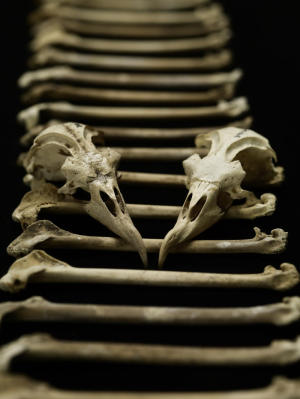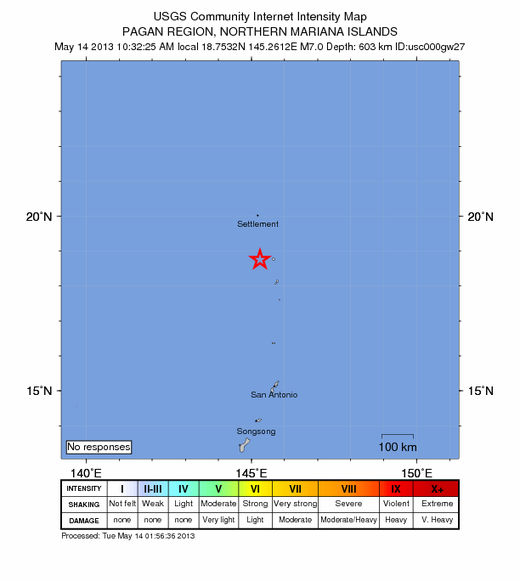Remains of endangered Hawaiian petrels -- both ancient and modern -- show how drastically today's open seas fish menu has changed.
© Courtesy of Brittany Hance, Imaging Lab, Smithsonian InstitutionExcavated bones of Hawaiian petrels – birds that spend the majority of their lives foraging the Pacific – show substantial change in the birds' eating habits.
A research team, led by Michigan State University and Smithsonian Institution scientists, analyzed the bones of Hawaiian petrels -- birds that spend the majority of their lives foraging the open waters of the Pacific. They found that the substantial change in petrels' eating habits, eating prey that are lower rather than higher in the food chain, coincides with the growth of industrialized fishing.
The birds' dramatic shift in diet, shown in the current issue of the
Proceedings of the National Academy of Sciences, leaves scientists pondering the fate of petrels as well as wondering how many other species face similar challenges.
"Our bone record is alarming because it suggests that open-ocean food webs are changing on a large scale due to human influence," said Peggy Ostrom, co-author and MSU zoologist. "Our study is among the first to address one of the great mysteries of biological oceanography -- whether fishing has gone beyond an influence on targeted species to affect nontarget species and potentially, entire food webs in the open ocean."
Hawaiian petrels' diet is recorded in the chemistry of their bones. By studying the bones' ratio of nitrogen-15 and nitrogen-14 isotopes, researchers can tell at what level in the food chain the birds are feasting; generally, the larger the isotope ratio, the bigger the prey (fish, squid and crustaceans).
Between 4,000 and 100 years ago, petrels had high isotope ratios, indicating they ate bigger prey. After the onset of industrial fishing, which began extending past the continental shelves around 1950, the isotope ratios declined, indicating a species-wide shift to a diet of smaller fish and other prey.
Much research has focused on the impact of fishing near the coasts. In contrast, the open ocean covers nearly half of Earth's surface. But due to a lack of historical records, fishing's impact on most open-ocean animal populations is completely unknown, said lead author Anne Wiley, formerly an MSU doctoral student and now a Smithsonian postdoctoral researcher.










